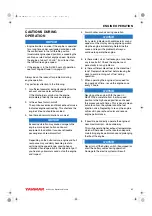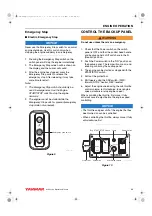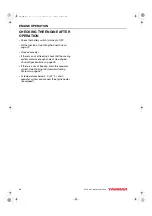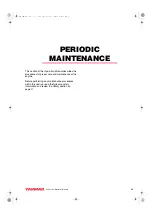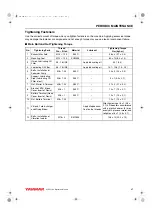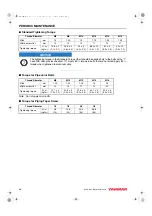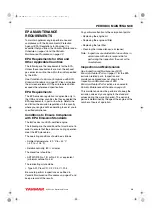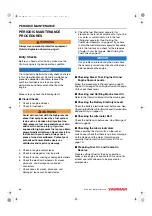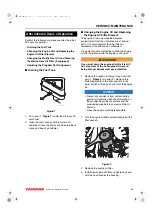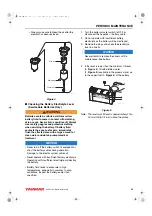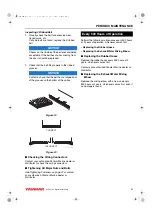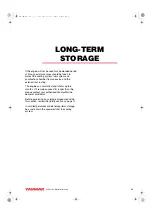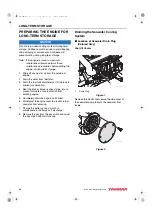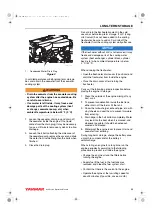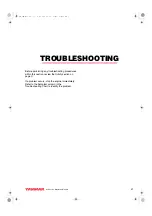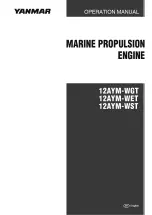
PERIODIC MAINTENANCE
42
8LV Series Operation Manual
PERIODIC MAINTENANCE
PROCEDURES
WARNING
Always wear personal protective equipment.
Refer to Explosion Hazard on page 4
.
Daily Checks
Before you head out for the day, make sure the
Yanmar engine is in good operating condition.
NOTICE
It is important to perform the daily checks as listed
in this Operation Manual. Periodic maintenance
prevents unexpected downtime, reduces the
number of accidents due to poor engine
performance and helps extend the life of the
engine.
Make sure you check the following items.
■
Visual Checks
1. Check for engine oil leaks.
2. Check for fuel leaks.
WARNING
Avoid skin contact with the high-pressure
diesel fuel spray caused by a fuel system
leak, such as a broken fuel injection line.
High-pressure fuel can penetrate your skin
and result in serious injury. If you are
exposed to high-pressure fuel spray, obtain
prompt medical treatment. Never check for a
fuel leak with your hands. Always use a
piece of wood or cardboard. Contact your
authorized Yanmar Marine dealer or
distributor and repair any damage.
3. Check for engine coolant leaks.
4. Check for damaged or missing parts.
5. Check for loose, missing or damaged fasteners.
6. Check the electrical harnesses for cracks,
abrasions, and damaged or corroded
connectors.
7. Check hoses for cracks, abrasions, and
damaged, loose or corroded clamps.
8. Check the fuel filter/water separator for
presence of water and contaminants. If you find
any water or contaminants, drain the fuel
filter/water separator.
Fuel/Water Separator on page 44
. If you have
to drain the fuel filter/water separator frequently,
drain the fuel tank and check for the presence
of water in your fuel supply.
.
NOTICE
If any problem is noted during the visual check,
the necessary corrective action should be taken
before operating the engine.
■
Checking Diesel Fuel, Engine Oil and
Engine Coolant Levels
Follow the procedures in
to check these levels.
■
Checking and Refilling Marine Gear Oil
Refer to the
Operation Manual
for the marine gear.
■
Checking the Battery Electrolyte Level
Check the battery electrolyte level before use.
Checking the Battery Electrolyte Level (Serviceable
Batteries Only) on page 45
■
Checking the Alternator Belt
Check the belt tension before use.
.
■
Checking the Alarm Indicators
When operating the start switch on the rocker
switch panel, check that there is no alarm message
on the display and the alarm indicators work
normally.
See Vessel Control System (VCS) on
.
■
Preparing Fuel, Oil, and Coolant in
Reserve
Prepare sufficient fuel for the day’s operation.
Always store engine oil and coolant in reserve (for
at least one refill) onboard, to be prepared for
emergencies.
8LV_OPM.book 42 ページ 2011年1月11日 火曜日 午後12時8分




